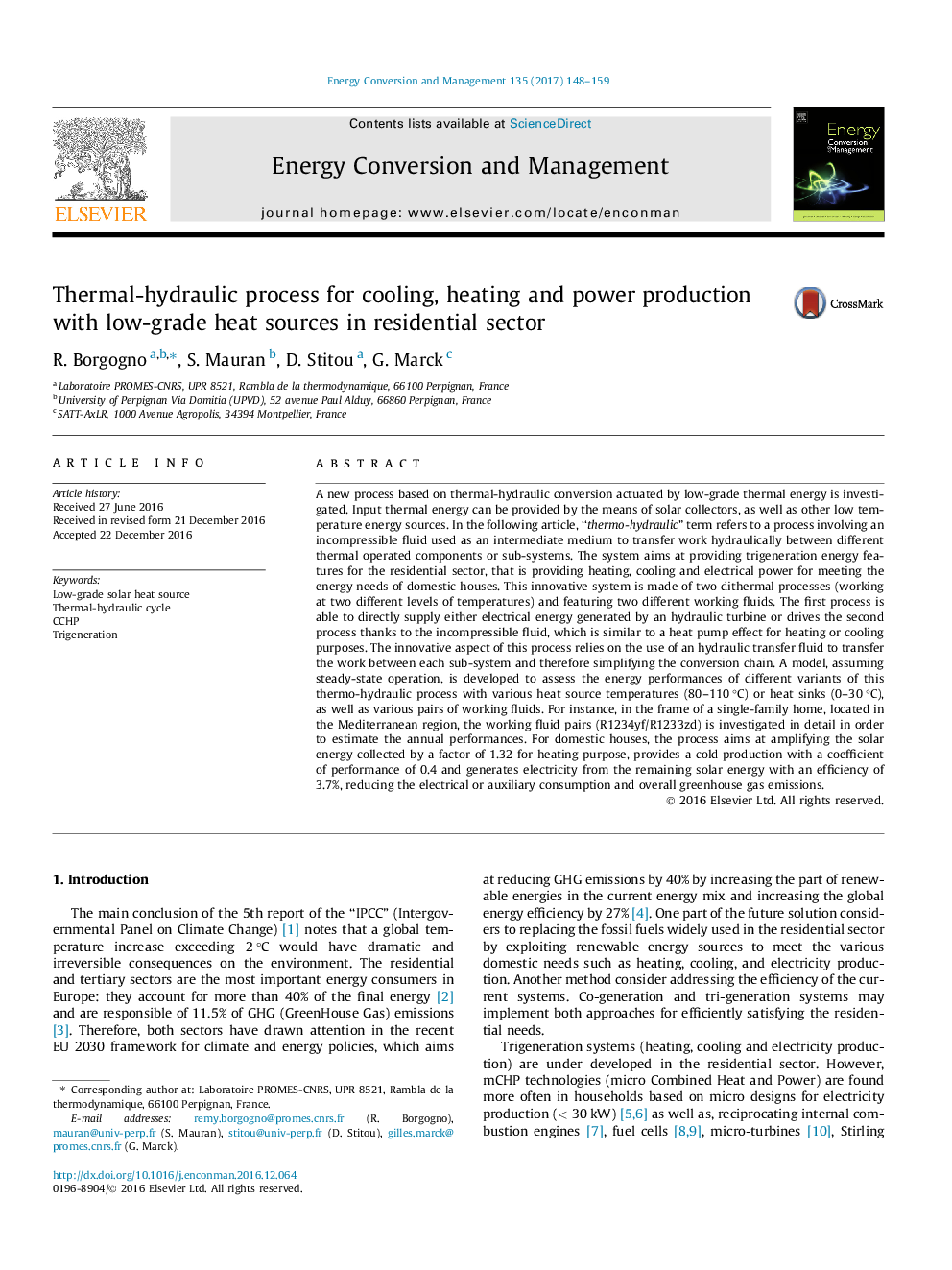| کد مقاله | کد نشریه | سال انتشار | مقاله انگلیسی | نسخه تمام متن |
|---|---|---|---|---|
| 5013220 | 1462827 | 2017 | 12 صفحه PDF | دانلود رایگان |
عنوان انگلیسی مقاله ISI
Thermal-hydraulic process for cooling, heating and power production with low-grade heat sources in residential sector
ترجمه فارسی عنوان
فرایند حرارتی هیدرولیکی برای خنک کننده، حرارت دادن و تولید برق با منابع حرارت پایین در بخش مسکونی
دانلود مقاله + سفارش ترجمه
دانلود مقاله ISI انگلیسی
رایگان برای ایرانیان
کلمات کلیدی
موضوعات مرتبط
مهندسی و علوم پایه
مهندسی انرژی
انرژی (عمومی)
چکیده انگلیسی
A new process based on thermal-hydraulic conversion actuated by low-grade thermal energy is investigated. Input thermal energy can be provided by the means of solar collectors, as well as other low temperature energy sources. In the following article, “thermo-hydraulic” term refers to a process involving an incompressible fluid used as an intermediate medium to transfer work hydraulically between different thermal operated components or sub-systems. The system aims at providing trigeneration energy features for the residential sector, that is providing heating, cooling and electrical power for meeting the energy needs of domestic houses. This innovative system is made of two dithermal processes (working at two different levels of temperatures) and featuring two different working fluids. The first process is able to directly supply either electrical energy generated by an hydraulic turbine or drives the second process thanks to the incompressible fluid, which is similar to a heat pump effect for heating or cooling purposes. The innovative aspect of this process relies on the use of an hydraulic transfer fluid to transfer the work between each sub-system and therefore simplifying the conversion chain. A model, assuming steady-state operation, is developed to assess the energy performances of different variants of this thermo-hydraulic process with various heat source temperatures (80-110 °C) or heat sinks (0-30 °C), as well as various pairs of working fluids. For instance, in the frame of a single-family home, located in the Mediterranean region, the working fluid pairs (R1234yf/R1233zd) is investigated in detail in order to estimate the annual performances. For domestic houses, the process aims at amplifying the solar energy collected by a factor of 1.32 for heating purpose, provides a cold production with a coefficient of performance of 0.4 and generates electricity from the remaining solar energy with an efficiency of 3.7%, reducing the electrical or auxiliary consumption and overall greenhouse gas emissions.
ناشر
Database: Elsevier - ScienceDirect (ساینس دایرکت)
Journal: Energy Conversion and Management - Volume 135, 1 March 2017, Pages 148-159
Journal: Energy Conversion and Management - Volume 135, 1 March 2017, Pages 148-159
نویسندگان
R. Borgogno, S. Mauran, D. Stitou, G. Marck,
